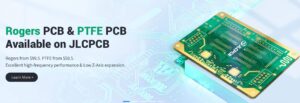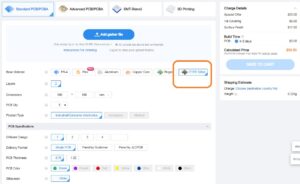Printed Circuit forums (PCBs) are vital additives in the electronics enterprise. They play a critical function in connecting electronic additives to gadgets, machines, and systems. But, now not all PCBs are created identically. In relation to high-frequency applications, well-known PCBs might not carry out optimally. That is in which PTFE PCBs are available. Here we will cover the details of PTFE PCBs, their capabilities, their benefits, and why they are the ultimate solution for high-frequency programs.
What is PTFE PCB?
- PTFE, or polytetrafluoroethylene, is a type of thermoplastic polymer this is used in different industries due to its superb thermal, electrical, and chemical houses.
- Whilst utilized in PCBs, PTFE can offer superior performance compared to different substances due to its high dielectric regular, low loss tangent, and fantastic thermal stability.
- Making PTFE PCBs involves embedding PTFE fabric into the PCB substrate using a variety of techniques, such as laminating or extruding. A PCB with outstanding electric and thermal performance is the final product, making it a great choice for high-frequency, high-electricity, and high-temperature applications.
PTFE material properties
- There are differnt features of material used for the creation of PTFE listed here
- It provides the good dielectric strength
- It has less value of the dissipation factor
- This material has High thermal stability
- Comes with the feature of chemical resistance
- This material absorbs the less moisture
Features of PTFE PCBs
Due to their distinct qualities, PTFE PCBs are ideal for high-frequency applications. These qualities consist of:
Low dielectric constant
Due of its low dielectric constant, it can efficiently store electrical energy. In high-frequency applications, where signal loss can be considerable, this characteristic is crucial.
Low loss tangent
This board has a low-loss tangent, which means it can dissipate electrical energy with minimal loss. In high-frequency applications, where signal loss can reduce system performance, this feature is essential.
High thermal stability
Because of its great thermal stability, PTFE can resist extreme temperatures without deteriorating. This characteristic is crucial in high-frequency applications where system performance might be impacted by temperature variations.
Chemical resistance
As These boards are resistant to the majority of chemicals, it may be used in extreme settings where regular PCBs would not hold up.
Low moisture absorption
It is the perfect material for high-humidity conditions because of its low moisture absorption, which means it can withstand moisture infiltration.
PTFE PCBs from JLCPCB

- Leading suppliers and producers of PTFE PCBs are JLCPCB. With years of PCB industry expertise, JLCPCB has been a reliable partner for clients all over the world.
- To accommodate the various requirements of its clients, JLCPCB provides a variety of PTFE PCB choices. JLCPCB has the knowledge and capacity to provide high-quality PTFE PCBs, regardless of whether you want a straightforward single-layer PCB or a complicated multi-layer PCB.
- The cutting-edge production capabilities of JLCPCB are one of the main benefits of hiring them for your PTFE PCB needs.
- JLCPCB makes use of cutting-edge tools and production techniques to guarantee dependable and consistent quality. As a result, you may anticipate receiving high-performance PTFE PCBs that precisely match your requirements. To make purchasing PTFE PCBs as simple as possible, JLCPCB also provides a variety of value-added services. This includes short turnaround times, rapid prototyping, and ordering and tracking online.
- JLCPCB also places a high priority on providing excellent customer service. At each step of the process, its team of skilled specialists is committed to making sure your demands are satisfied. You can rely on JLCPCB to give you the assistance you need to complete the task correctly, from design to delivery.
- You can get PTFE PCBs for $50.5 from this best PCB supplier. Save you more than $100 compared to other HF PCBs on the market.
- Here are some features of PTFE offered by the JLCPCB are listed
- PCB Thickness:0.76/1.52
- PCB Laminates: ZYF255DA(Dk=2.55, Df=0.0018)/ ZYF265D(Dk=2.65, Df=0.0019)/ ZYF300CA-C(Dk=2.94, Df=0.0016)/ ZYF300CA-P(Dk=3.00, Df=0.0018)
Advantages of PTFE Teflon PCB from JLCPCB
- With its exceptional overall performance in real-world applications, PTFE Teflon PCB is the perfect material to employ for intricate and reliable designs. It has outstanding dielectric characteristics, robust heat dissipation, superior mechanical stability, and good temperature resistance. It is also an economical choice because it is quite tough in use and can survive some oxidation and UV radiation.
- Further details of the JLCPCB PTFE board can seen in this picture
How to order PTFE Teflon PCB on JLCPCB
- First of all visit the JLCPCB site: https://jlcpcb.com/ILV
- You can see the below figure add the Gerber file option to upload your Gerber file here
- Then choose the PTFE according to your project requirements
- Now choose PCB thickness and PCB Laminates
- After that choose other specifications according to need and finally save to the cart and checkout

PTFE VS FR4 PCB
- Two popular PCB material types with unique benefits and drawbacks are PTFE and FR4.
- Polytetrafluoroethylene, a kind of artificial fluoropolymer, is used to create PTFE PCBs. High-frequency performance, great heat stability, and little dielectric loss are all attributes of PTFE. Because of this, PTFE is a great option for applications requiring minimal loss and high-speed signal transmission.
- FR4 PCBs, on the other hand, are constructed from a composite material composed of woven fiberglass fabric and an epoxy resin binder. Widely used PCB material FR4 is renowned for being strong and economical. It is appropriate for a variety of applications since it is also a great electrical insulator.
- It’s crucial to take your application’s particular requirements into consideration when contrasting PTFE and FR4 PCBs. PTFE can be a preferable option if you need high-frequency performance and minimal loss.
- But, FR4 could be a better choice if you’re seeking for a robust and affordable alternative for common PCB applications. The price is another thing to think about. Although PTFE often costs more than FR4, it may not be as appealing for some applications.
| PTFE PCBs | FR4 PCBs | |
|---|---|---|
| Material | Polytetrafluoroethylene | Fiberglass cloth and epoxy resin |
| >td >Excellent | Good | |
| Dielectric Loss | Low | Moderate |
| High-Frequency Performance | Excellent | Good |
| Durability | Good | Excellent |
| Electrical Insulation | Excellent | Excellent |
| Cost | More expensive | Less expensive |
Specifications of Commonly Used Teflon PCBs
| Teflon PCB Type | Dielectric Constant | Dissipation Factor | Operating Temperature | Copper Thickness |
|---|---|---|---|---|
| Teflon FR-4 | 4.2 | 0.02 | -55°C to 150°C | 1 oz to 3 oz |
| Teflon P95 | 3.5 | 0.002 | -65°C to 200°C | 1 oz to 2 oz |
| Teflon FEP | 2.1 to 2.4 | 0.0004 to 0.001 | -200°C to 200°C | 1 oz to 3 oz |
| Teflon PTFE | 2.1 to 2.2 | 0.0002 to 0.0005 | -200°C to 260°C | 1 oz to 3 oz |
Teflon FR-4: Teflon FR-4 is a composite material made of an epoxy resin-coated woven fiberglass substrate. It offers strong mechanical and electrical qualities at a reasonable price. Consumer gadgets like PCs, routers, and cell phones frequently utilize it.
Teflon P95: Teflon P95 is a high-temperature material that employs a Teflon resin system and a woven fiberglass substrate. It can function at high temperatures without deteriorating and has great electrical characteristics. It is often employed in aerospace and defense applications.
Teflon FEP: Teflon FEP is a fluoropolymer substance made from an ethylene-propylene substrate that has been fluorinated. It operates at a low-value of temperature and provides good electrical parameters. It is used in medical devices such as pacemakers and defibrillators
Teflon PTFE: A pure Teflon substrate is employed in high-performance devices called Teflon PTFE. High-frequency applications are made possible by their lowest dielectric constant and dissipation factor among all materials. Its main applications are telecommunications, aerospace, and defense applications.
Advantages of PTFE PCBs
PTFE PCBs are the best option for high-frequency applications due to their many benefits over conventional PCBs. These benefits consist of:
Low signal loss
PTFE PCBs can carry high-frequency signals with little attenuation because they have a low signal loss. This property is essential in applications such as telecommunications, aerospace, and defense, where signal loss can be critical.
Better thermal stability
PTFE PCBs are superior to regular PCBs in terms of heat stability, making them perfect for high-temperature applications. This characteristic is crucial in sectors including automotive, aerospace, and military where system performance can be impacted by temperature variations.
High reliability
These PCBs have high reliability compared to standard PCBs. They have a longer lifespan and can withstand harsh environments, making them suitable for applications that require high reliability.
Design flexibility
Since boards provide design freedom, they are appropriate for intricate circuit designs. It can be used for the creation of multilayer PCBs, which can boost system functionality while decreasing the PCB board size.
PTFE PCBs Manufacturing Process
The production process of these PCBs, including the materials utilized and the various manufacturing techniques, will be covered in this section. We’ll also go over the difficulties encountered and solutions to them during the production process.
Materials Used in PTFE Boards
Tetrafluoroethylene is a synthetic fluoropolymer that is used for the creation of PTFE boards. We’ll talk about the characteristics of PTFE material and how they affect the characteristics of PTFE PCBs.
Methods of Manufacturing PTFE PCBs
These boards may be made using a variety of techniques, including as drilling, laminating, and etching. We will go into great depth about the benefits and drawbacks of each of these techniques.
Challenges Faced During Manufacturing
The handling of PTFE material, hole drilling, and lamination are only a few of the difficulties involved in producing PTFE PCBs. We’ll go over each of these difficulties and how to get beyond them.
Applications of PTFE PCBs
In businesses that demand high-frequency applications, PTFE PCBs are often employed. These industries include, among others:
Telecommunications
In the telecommunications sector, PTFE PCBs are used to make high-frequency filters, amplifiers, and antennas.
Aerospace and defense
In the aerospace and defense sector, PTFE PCBs are used to build communication, satellite, and radar systems.
Discussions
Become a Hackaday.io Member
Create an account to leave a comment. Already have an account? Log In.